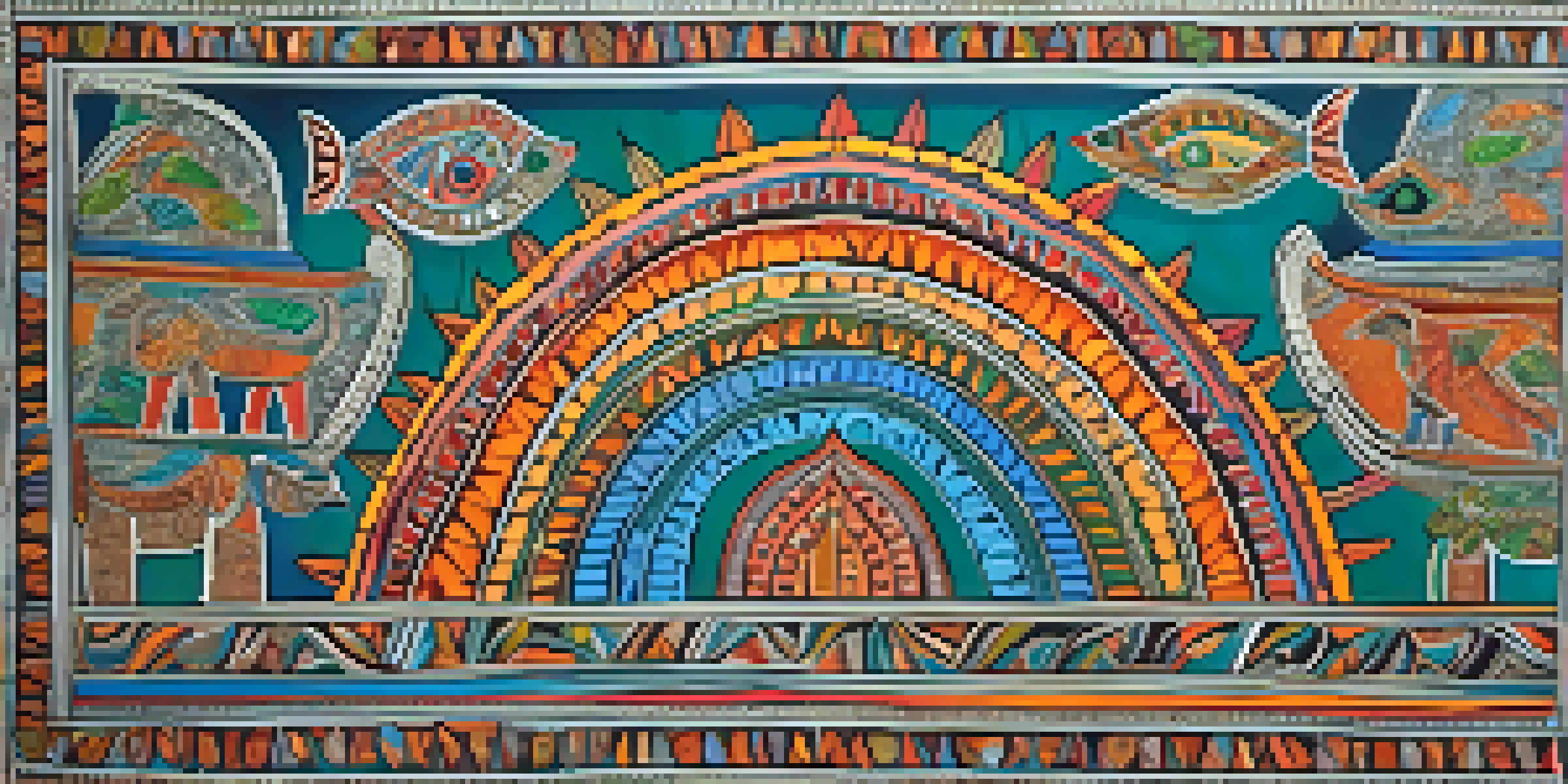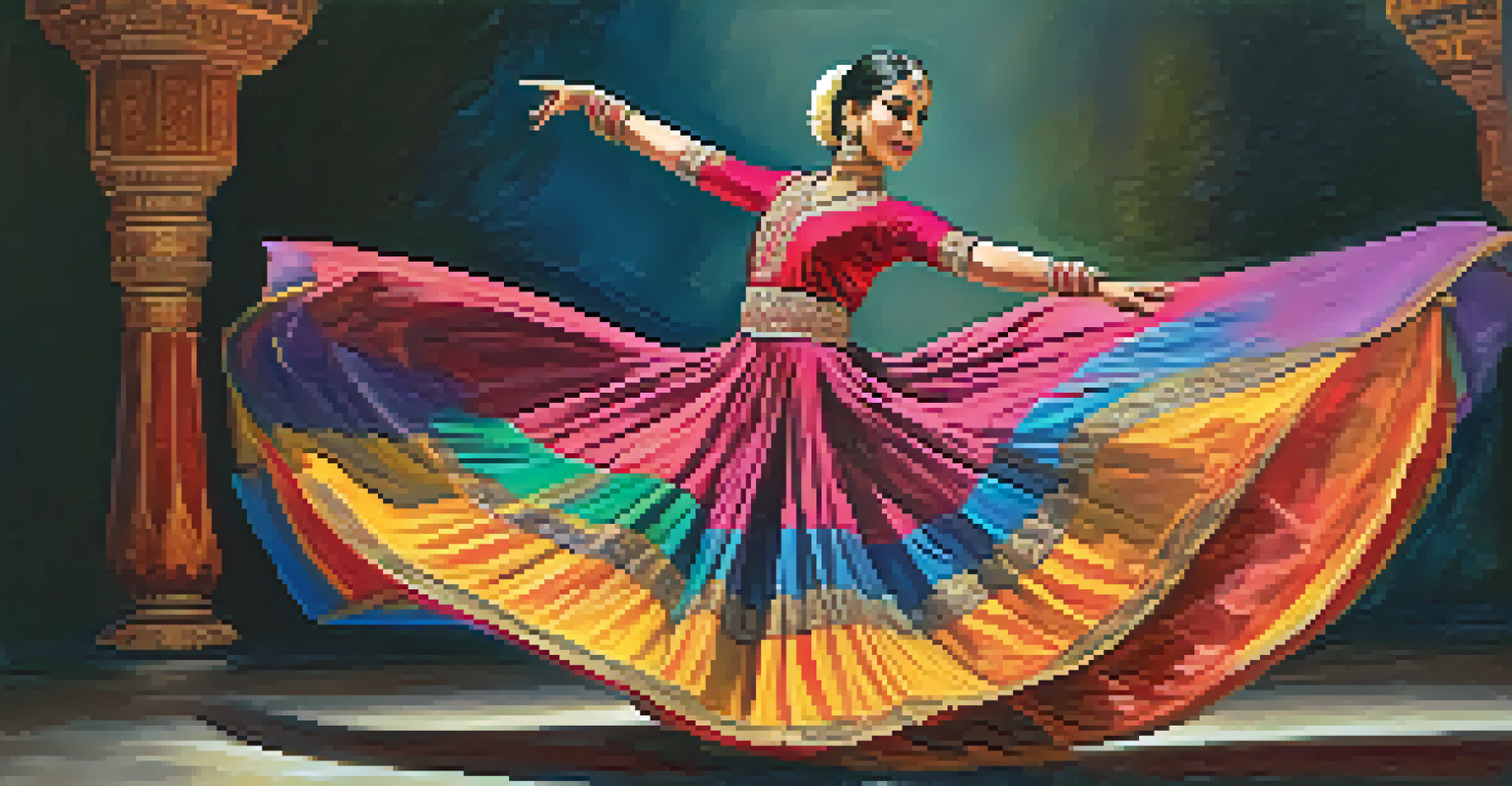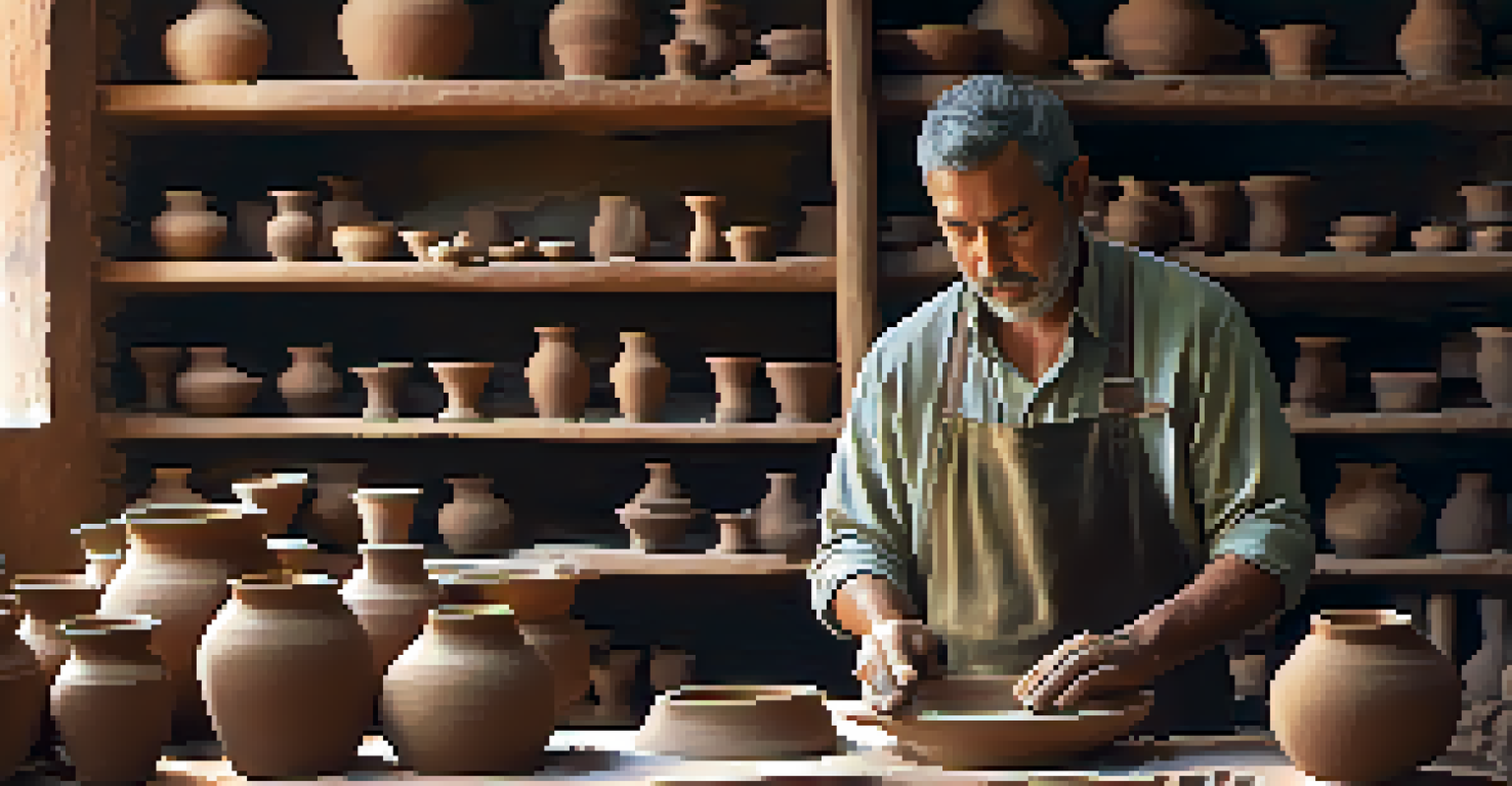Unveiling Traditional Art Forms in India's Regional Tours

The Essence of Traditional Arts in India
India's traditional art forms are a vibrant tapestry, woven from centuries of culture and history. Each region boasts unique artistic expressions, reflecting the local customs, beliefs, and stories. From the intricate patterns of Madhubani painting to the rhythmic beats of Kathak dance, these art forms are not just visual or auditory delights; they are living narratives that resonate with the soul of the people.
Art is the most beautiful of all lies.
Understanding the essence of these art forms requires us to delve into their origins and significance. Many traditional arts have been passed down through generations, often imbued with spiritual or communal meanings. This rich heritage is not just about aesthetics; it serves as a bridge connecting past and present, community and individual.
As we embark on regional tours, we get the chance to witness these art forms in their natural habitat, often performed or created by the artisans themselves. This immersive experience adds a layer of authenticity, allowing us to appreciate the skills and stories behind each masterpiece.
Exploring the Colors of Madhubani Art
Madhubani art, originating from Bihar, is known for its bold colors and intricate patterns. Traditionally created by women, this art form employs natural dyes and pigments, making each piece eco-friendly and unique. The motifs often depict mythological scenes, nature, and social themes, offering a glimpse into the local culture and values.

During regional tours, one can participate in workshops that teach the fundamentals of Madhubani painting. These hands-on experiences not only enhance appreciation but also empower local artists by providing them with a platform to share their skills. Visitors leave with personal masterpieces that hold a story of their own.
Traditional Arts Reflect Culture
India's traditional art forms serve as living narratives, showcasing the unique customs and stories of each region.
Furthermore, the resurgence of Madhubani art in contemporary design has opened new avenues for artisans. By blending traditional techniques with modern aesthetics, artists are reaching broader audiences, ensuring that this vibrant art form continues to thrive and evolve.
The Rhythmic Beauty of Kathak Dance
Kathak is one of the classical dance forms of India, known for its graceful movements and storytelling ability. Originating from the northern states, it combines intricate footwork, expressive gestures, and lively facial expressions. This dance form often narrates tales from Hindu epics, making each performance an enchanting journey through mythology.
The purpose of art is not a rarified, intellectual distillate; it is life, intensified, and transformed.
Attending a live Kathak performance during a regional tour is nothing short of magical. The dancers, adorned in colorful costumes, captivate audiences with their skillful footwork and expressive storytelling. Each performance is a celebration of rhythm and emotion, inviting spectators to lose themselves in the narrative.
For those interested in learning, many tours offer short Kathak workshops. Here, participants can try their hand at basic steps and understand the discipline involved in mastering this art form. This interactive experience fosters a deeper connection to the culture and appreciation for the artistry behind Kathak.
The Intricacies of Pottery in Rural India
Pottery is one of the oldest art forms in India, with each region showcasing distinct styles and techniques. From the terracotta figures of West Bengal to the blue pottery of Jaipur, the diversity is astounding. Pottery not only serves practical purposes but also acts as a canvas for artistic expression, often adorned with intricate designs and vibrant colors.
During regional tours, visitors can engage with local potters and witness the craftsmanship firsthand. Many artisans are eager to share their techniques and stories, providing insight into the cultural significance of their work. This personal interaction enriches the experience, making it memorable and meaningful.
Hands-On Experiences Enrich Travel
Participating in workshops during regional tours fosters a deeper appreciation for the skills and stories behind traditional arts.
Moreover, pottery workshops allow participants to create their own pieces under the guidance of skilled artisans. This hands-on activity fosters creativity and provides a deeper understanding of the effort that goes into each handcrafted item, highlighting the importance of preserving these traditional skills.
Exploring the World of Weaving in India
Weaving is another traditional art form that varies significantly across India's regions. From the luxurious silks of Varanasi to the vibrant patterns of Kanchipuram sarees, each piece tells a story of its origin. The skill of weaving is often a family tradition, passed down through generations, preserving techniques that have evolved over centuries.
On regional tours, visitors can often visit weaving villages, where they can observe the intricate process of creating textiles. These experiences provide a unique opportunity to understand the dedication and artistry involved in each weave, as well as the challenges faced by artisans in a rapidly changing market.
Additionally, many tours offer workshops where participants can try their hand at weaving. This interactive element not only enhances appreciation for the craft but also supports local artisans by fostering a deeper connection between creators and consumers.
The Musical Heritage of Indian Folk Arts
India's musical traditions are as diverse as its languages and cultures, with each region showcasing unique folk styles. From the soulful melodies of Rajasthan's Manganiyars to the energetic beats of Bhangra from Punjab, music serves as a vital part of community life and celebrations. These folk arts often reflect the joys, sorrows, and stories of the local people.
Regional tours often include live performances, allowing visitors to immerse themselves in the local musical heritage. The energy of a live folk performance is infectious, drawing audiences into the rhythm and spirit of the culture. These experiences not only entertain but also educate travelers about the significance of music in social and religious contexts.
Preserving Arts Through Tourism
Responsible tourism that supports local artisans and authentic experiences is crucial for the preservation of traditional arts.
For those interested, many tours offer opportunities to learn traditional musical instruments or participate in group singing sessions. Engaging with local musicians fosters a sense of community and connection, enriching the overall travel experience.
Discovering the Craft of Block Printing
Block printing is a traditional Indian craft that beautifully combines art with textile production. Originating from various regions, such as Rajasthan and Gujarat, this technique involves hand-carving designs onto wooden blocks and stamping them onto fabric. The result is a stunning array of patterns and colors that tell a story of craftsmanship and tradition.
During regional tours, visitors can explore block printing workshops where artisans demonstrate their skills. Observing the meticulous process from start to finish offers a deeper appreciation for the effort involved in creating each piece. It's a reminder of the artistry behind everyday items, transforming fabric into wearable art.

Furthermore, many tours encourage participants to try block printing themselves, allowing them to create unique souvenirs. This hands-on experience not only supports local artisans but also connects travelers to the rich heritage of Indian textiles.
Preserving Traditional Arts for Future Generations
As we explore these traditional art forms, it's crucial to recognize the challenges they face in the modern world. Globalization and changing market dynamics have put pressure on artisans, often threatening the survival of these unique crafts. Supporting these art forms through responsible tourism can play a significant role in their preservation.
Regional tours that prioritize authentic experiences and engage directly with artisans help sustain these traditions. By purchasing handmade items, participating in workshops, and spreading awareness, travelers contribute to the livelihoods of local communities and the continuation of their cultural heritage.
Ultimately, embracing traditional arts is not just about enjoying beautiful creations; it’s about honoring the stories and skills behind them. Through our travels, we can ensure that these art forms remain vibrant and relevant for future generations, creating a lasting legacy that transcends time.